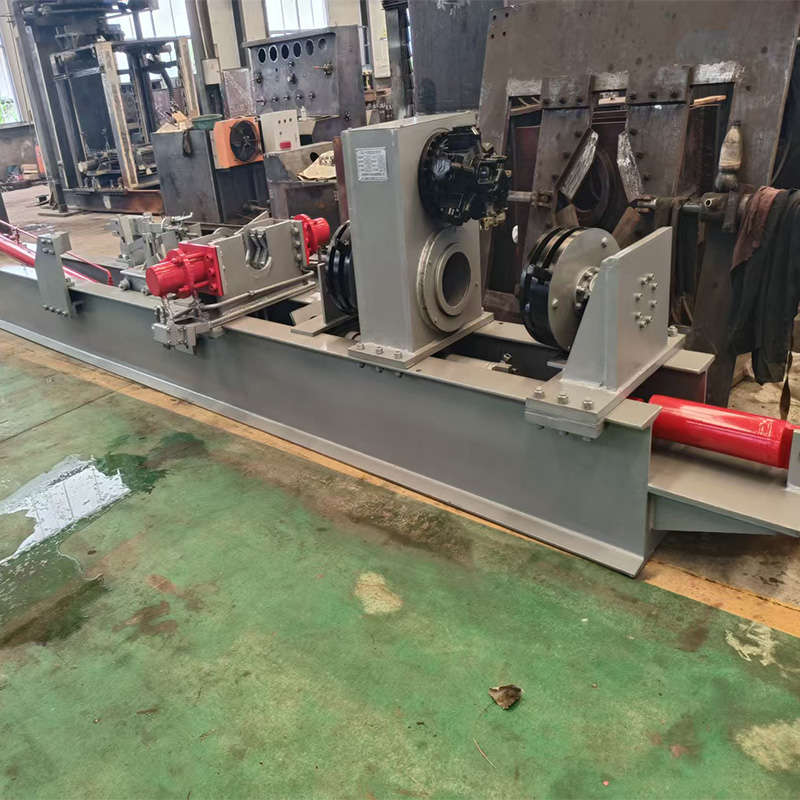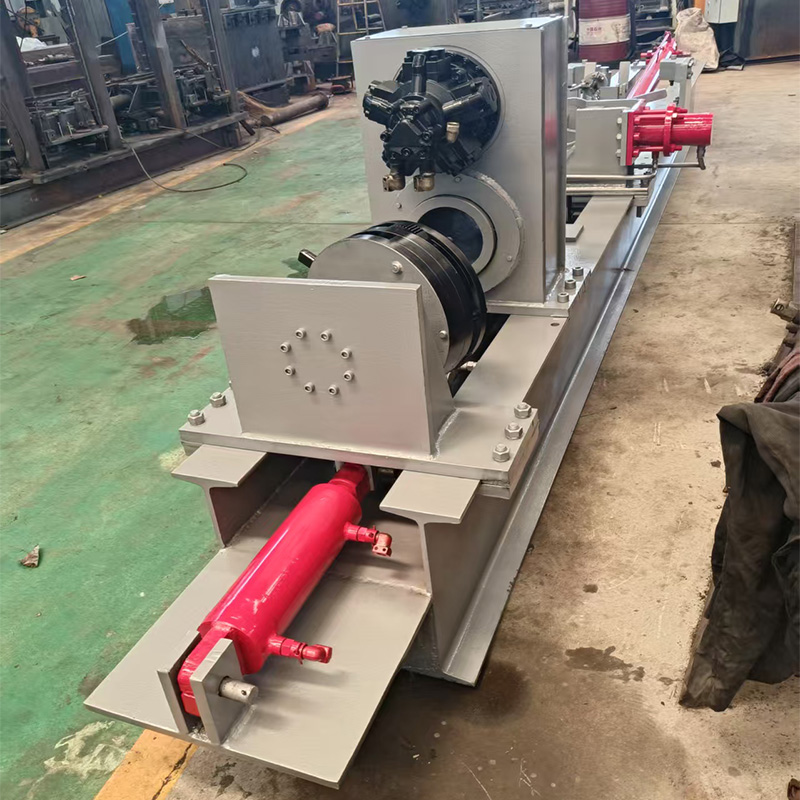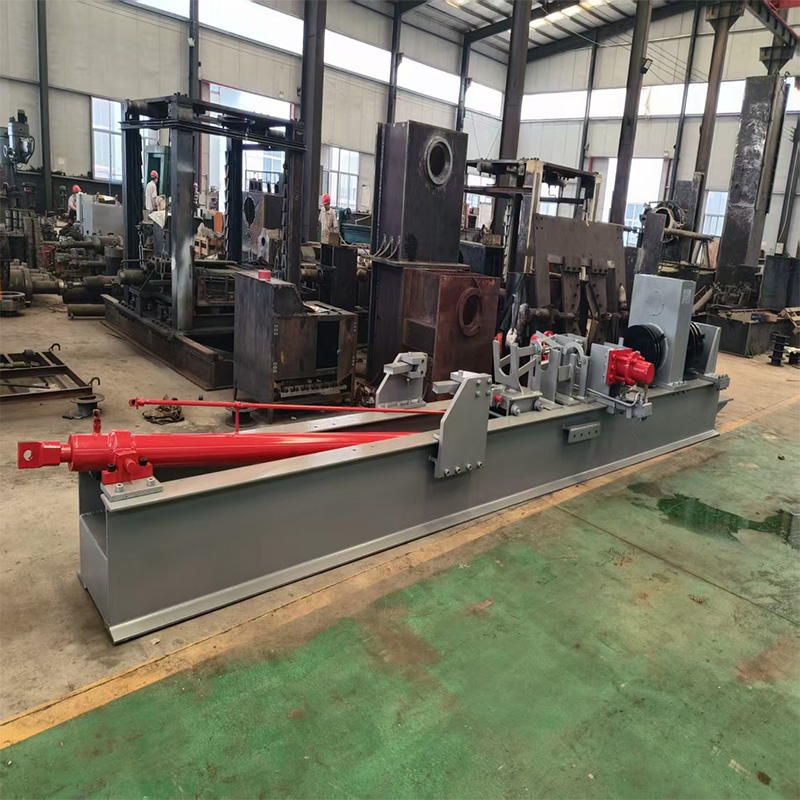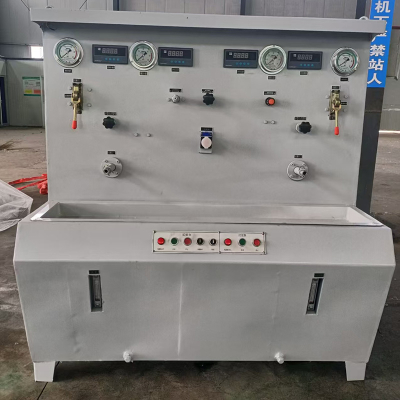Self-Propelled Hydraulic Support Column Dismantler
1. Efficient disassembly capability
2. Safety and reliability
3. Safety and reliability
4. Energy conservation and environmental protection
Self-Propelled Hydraulic Support Column Dismantler:
Self-Propelled Hydraulic Support Column Dismantler is a specialised disassembly and assembly equipment designed for hydraulic assist columns, jacks, and one of a kind elements in coal mine complete mining. It adopts mechanical, hydraulic, and electrical gadget linkage control to reap surroundings pleasant and automated operations. Its core form includes:
1. Mobile base: geared up with taking walks wheels or tracks, it can be flexibly moved to the working surface, reducing equipment transportation time.
2. Clamping sliding device: Fix the column with a hydraulic chuck or self positioning locking mechanism to adapt to workpieces of special diameters (such as 200-650mm) and lengths (such as 2200mm).
3. Hydraulic motor transmission: It makes use of a low-speed immoderate torque hydraulic motor to strain rotation, with an preliminary torque of up to 9000N · m, making it straight forward to disassemble corroded or threaded components.
4. Long stroke slide table: Equipped with a hydraulic slide desk with a stroke of 1800mm or more, it can complete a couple of strategies such as pulling out the lively column and disassembling the statistics sleeve in one go.
5. Modular design: integrating realistic devices such as three-way valve separation and base disassembly, helping fast mildew replacement to adapt to one-of-a-kind varieties of brackets.
Packaging and Shipping Standards:
1. Equipment fixation and protection
Independent packaging of core components: precision components such as hydraulic motor and reducer shall be filled with shockproof foam and reinforced with wooden frame to prevent seal damage or axial displacement due to collision during transportation. For example, the CZ-3.5 column dismantling power station of Taian Warner has a motor power of 18.5KW, and its motor needs to be separately fixed on a customized tray to avoid direct contact with metal components.
Electrical system isolation: PLC control cabinets, sensors and other electrical components need to be packaged in anti-static bags and labeled with "fragile" signs to prevent short circuits caused by moisture or static electricity.
Modular mold classification storage: Three purpose valve separation molds, base disassembly fixtures, etc. need to be classified and packed according to models, with assembly drawings attached to avoid confusion on site.
2. Selection of packaging materials
Rust prevention treatment: After spraying rust prevention oil on the metal surface of the equipment, wrap it with VCI vapor phase rust prevention film and cover it with waterproof canvas. For example, the eccentric bidirectional chuck technology dismantling machine of Shandong Dongda Electromechanical requires the chuck to be coated with special anti rust grease before packaging to ensure that the shipping environment does not rust.
Structural reinforcement: For long stroke sliding tables (such as 1800mm and above), angle steel welding is required to reinforce the frame, and the equipment is fixed to the bottom plate with bolts. The CZ-3.5 column dismantling machine from Tai'an Jiufang has a total size of 5700 × 1530 × 840mm, and its bottom plate needs to be welded with steel plates of 10mm or more to prevent deformation during transportation.
3. Transportation and loading/unloading standards
Vehicle matching: Select a heavy-duty flatbed truck with more than 10 axles based on the weight of the equipment (such as the total weight of the Haozhou Mining column dismantling machine, which is about 5 tons), to ensure that the carriage is flat and free of protrusions.
Lifting operation: Use an aerial crane weighing over 50 tons for lifting, and rubber sleeves should be added to the contact area between the sling and the equipment; When loading, the center of gravity of the equipment should coincide with the vehicle axis, with a deviation of no more than 50mm.
Precautions for use:
1. Pre operation inspection
Component integrity: Check if the hydraulic pipeline connections are correct and if all U-shaped cards are inserted; Add 30 # or 46 # gear oil to the oil tank until it reaches 3/4 of the liquid level transmitter.
Material adaptability: Select appropriate fixtures based on the pillar model (such as DZ type single hydraulic pillar).
Environmental safety: Clean up debris on site to ensure spacious operating space; Check the stability of the top plate and promptly repair any broken nets or ropes found. For example, when dismantling hydraulic supports for large mining heights, temporary scaffolding support needs to be installed 300-500mm near the next frame in the frame pit after each dismantling.
2. Standardization during operation
Torque control: Real time adjustment of speed and torque (range 1000-210000N · m) through hydraulic system to avoid equipment damage caused by overload.
Forward and backward rotation: Implement forward and backward rotation according to the plan, and control the speed in real time to make the system more reliable.
Personnel positioning: During operation, personnel should stand at a safe distance to prevent the pillar from tipping over or the live pillar from popping out and injuring people. For example, when disassembling the top cover, it is necessary to use a stopper to hold the top cover, operate the middle plate valve to make the column jack drive the pulley to move, and personnel are strictly prohibited from reaching into the dangerous area.
3. Maintenance and upkeep
Regular lubrication: Add lithium based grease to moving parts such as guide rails and sliders every 500 hours to reduce frictional resistance.
Hydraulic oil replacement: Replace the hydraulic oil every 2000 hours and clean the oil tank and filter screen. If the oil is found to have deteriorated or the cleanliness is not up to standard, it needs to be replaced immediately, otherwise it will affect the efficiency of the system operation.
Electrical system inspection: Regularly check whether the wiring terminals of the electrical control cabinet are loose to avoid poor contact and equipment failure.
4. Safety protection measures
Emergency stop device: Install red emergency stop buttons around the operation panel and equipment to ensure that the power can be cut off within 0.5 seconds in case of emergencies (such as chuck slippage).
Protective fence setting: Install metal guardrails with a height of ≥ 1.2m in open areas (such as the sliding range) to prevent personnel from accidentally entering and causing compression injuries.
Overload protection: The hydraulic system is equipped with an overflow valve, which automatically releases pressure when the pressure exceeds the set value (such as 25MPa) to prevent equipment damage.












